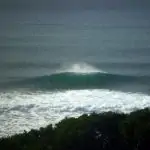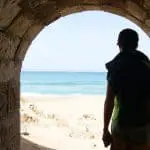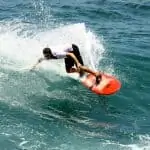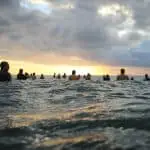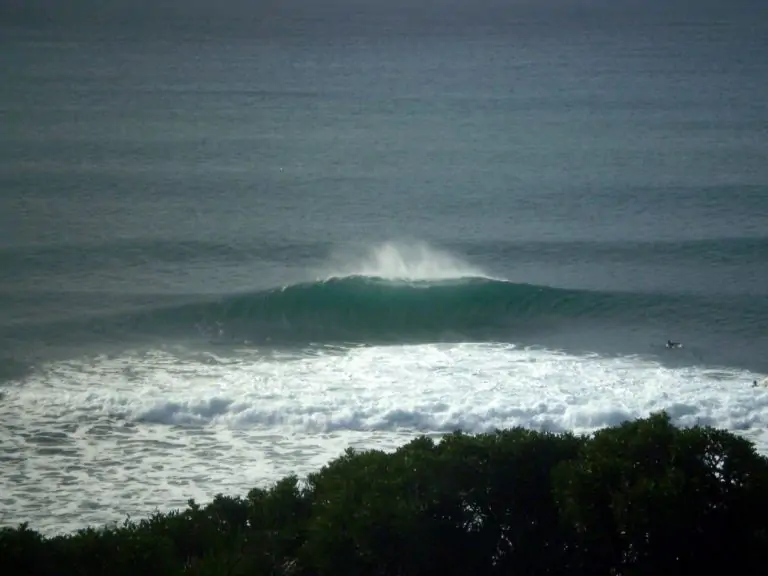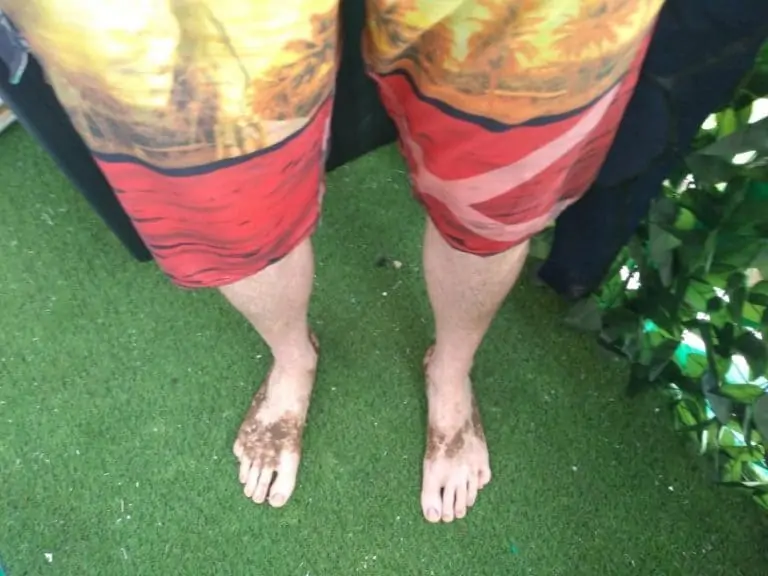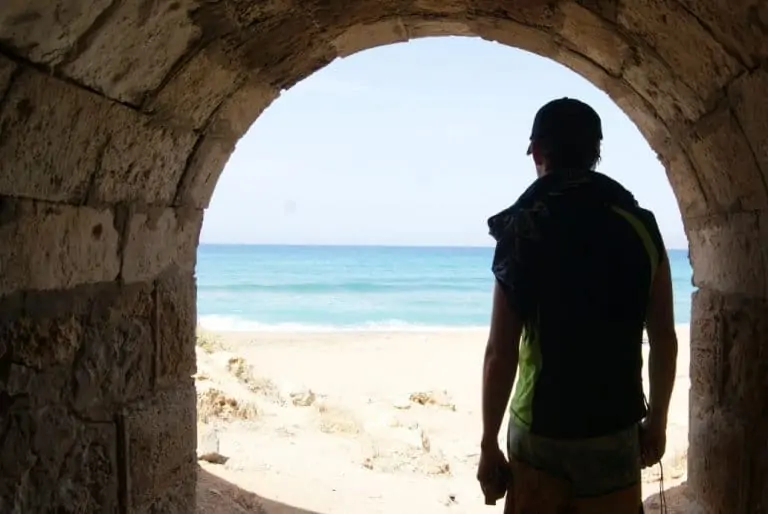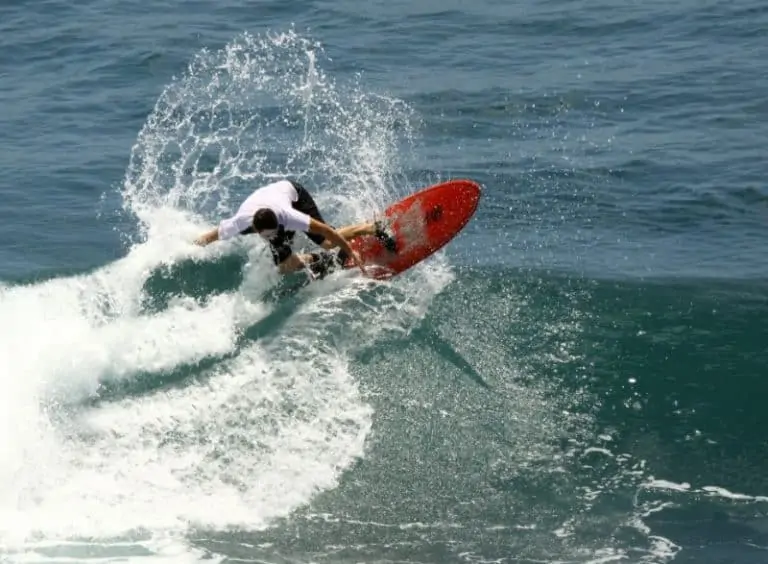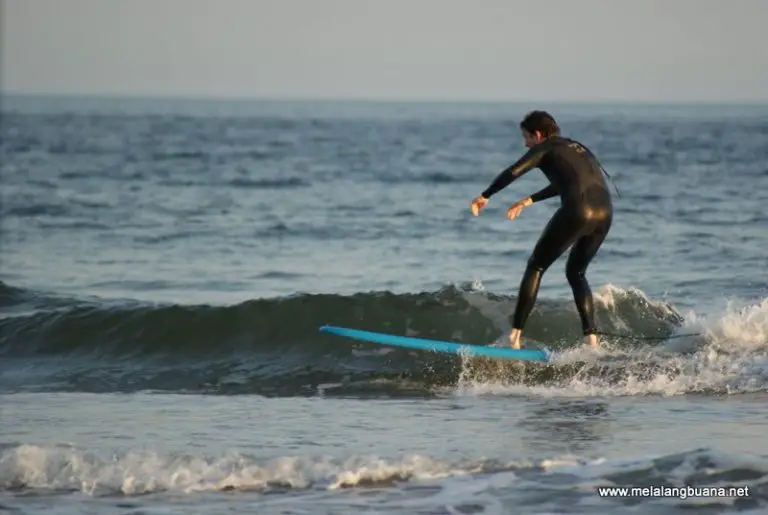Surfing Wave Period [EXPLAINED]
Wave period is the average time in seconds between waves over a minute. The longer the time between the waves, the higher the period in seconds and the better quality the waves, because it means the waves have had time to organize after a storm.
Let me explain more.
Wave Period on Your Surf Forecast
When you look at a surf forecast, most of them display the wave size as ‘wave height @ seconds‘. The height could be feet or meters.
Now, although most of us can recognize the height quite easily, the wave period is actually the crucial factor in a surf forecast because you can have a decent-sized wave height with a very small period that makes the waves almost unsurfable.
If the wave period is very large and you have a small wave height, you can have some very big and powerful waves because of how the wave period works.
Bigger Wave Periods, Mean Bigger Waves
Because the wave period is measured as the interval between waves seconds, this means that higher wave periods are an indicator of bigger waves. When waves come after wind or from a storm calmer, you really want them to have had time to calm down before they hit the coast.
If they do have time to calm down, then they will often separate out. And this will be shown in the wave period.
Groundswell is the Best Quality Surf and Has Higher Periods
Surfers often look for what’s called groundswell, which is really just a swell that has travelled a long distance. And a key indicator of this is a high wave period in the surf of August.
This might be 12 to 20 seconds depending on where you are in the world because the wave period varies greatly, but you will start to see it.
If you look at your sear forecast, secondly.
Waive Periods Are Very Different All Over The World
Wave periods in places like Bali, Indonesia can reach up to about 22 seconds on a very big day. Whereas in Northern Europe, 15, 15 seconds is a huge wave period.
And very, very rarely this difference is because of things like I, and out in the deep Atlantic and Indian Pacific oceans get more raw ocean energy.
The Northern European coastline has a continental shelf, which dissipates some of that energy, making the waves a bit smaller, but also means that the weather patterns change. And we often get storms closer to shore.
It Takes Time to Learn the Good Wave Period for Your Area
When you start looking at the surgical forecast for your area, you will not know what a good wave period is, but this gets easier over time. Every time you look at the forecast, take a note of the wave period and store it, write it down, log it in some way and compare that to the surf.
You will find that the average wave period means an average day and a very high wave period often leads to a much bigger day.
Use the Wave Period to Your Advantage.
You’ll start to see that you can go surfing on days when the waves, the wave height looks small, but the wave period is big. And some days this might even be a lot bigger than you expect. This is where keeping a log of all your surf sessions and conditions is really helpful.
You can do this for free on something like Evernote and just take screen grabs and clips of say forecast websites on the date.
Or as I do have my own spreadsheet where I put in all the data, whenever I go surfing, so I can compare it against it over time, you’ll build up this knowledge of your local area and you will be able to understand the wave period.
It just won’t come overnight. You have to log in and do the hard yards to start.
Use the Same Surf Forecast Website to Help You Understand the Wave Period Better
There are many ways SIF forecast websites, and they all seem to give you a very different wave period reading. And some of them are different wave height readings.
For this reason, I recommend using the one you like the most and find the most user-friendly and stick with that. That way you can then really hone in your local sports and wave conditions, especially using that wave period over time and get better at predicting the surf.
Ultimately, there is no definitive way to say exactly how big the waves are at the beach because conditions can make things very different.
Even when you have similar measurements, if you use the same sift forecast website, you’ll become knowledgeable in that site and you will therefore be able to use it to your advantage.
The sites, I look at a wind guru, which is a bit more technical magic seaweed, and Surfline when the guru is not a great place to start because it’s a little bit confusing to read, and it doesn’t give you any input on how the wave size might be.
It’s all just numbers, whereas magic. We didn’t say fine.
Take the numbers and try to give you an estimated wave size, which is really helpful if you’re starting out personally, I like wind guru because I’ve learned how to use it over time.
But for a beginner, I would choose to say, Flying if you’re in the US or Canada and probably Magic Seaweed, if you’re in Europe, also, you can look at the Coastal Watch in Australia, which has lots of camps.
And don’t forget. Webcams are a really good addition to help you understand the wave period.
Try Timing the Interval Between Waves to Get an Idea of the Period.
When you paddle out into the surf, you could take a stopwatch on your wrist and actually timed intervals between the sets. This will help you start to understand just how much of a difference the wave period makes.
I used to do this when I was out in Bali because the sets would be so much bigger than the average waves.
When the wave period was big, this actually helped me more on a survival note than anything, because I knew I should stop paddling for the horizon. If it’d been a while without to set, when the sets come in Bali, it’s a thing of beauty, but also a thing of terror.
So be prepared if you’re going out in a big wave period, and it seems calmer than usual, there might be a big set on the horizon just when you least expect it.
